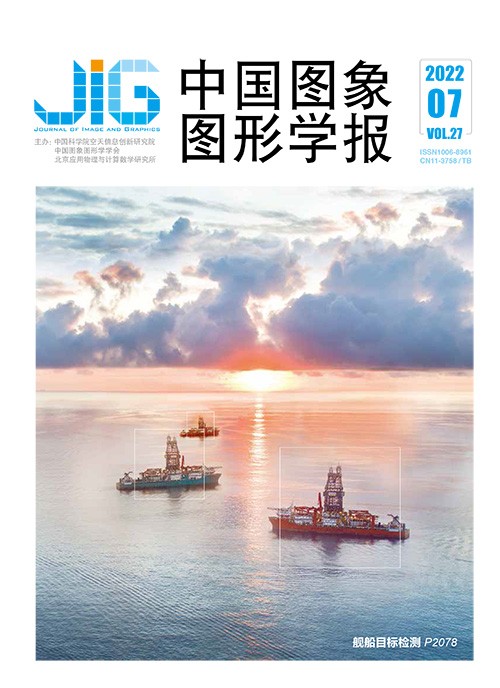
图像增强对显著性目标检测的影响研究
摘 要
目的 雾霾、雨雪天气和水下等非理想环境因素会引起图像退化,导致出现低质图像,从而影响人类主观视觉感受及机器视觉应用任务的性能,因此,低质图像被利用之前进行图像增强成为惯常的预处理过程。然而,图像增强能否提高图像机器视觉应用任务的性能及影响程度等问题鲜有系统性研究。针对上述问题,本文以图像显著性目标检测这一机器视觉应用为例,研究图像增强对显著性目标检测性能的影响。方法 首先利用包括5种传统方法、6种深度学习方法等共11种典型图像增强方法对图像进行增强处理,然后利用8种典型的显著性目标检测方法对增强前后的图像分别进行显著性目标检测实验,并对比分析其结果。结果 实验表明,图像增强对低质图像显著性目标检测方法性能的促进作用不明显,某些增强方法甚至表现出负面影响,也存在同一增强方法对不同的显著性目标检测方法作用不同的现象。结论 图像增强对于显著性目标检测及其他的机器视觉应用的实际效果值得进一步研究,如何根据图像机器视觉应用的需求来选择和设计有效的增强方法需进一步探讨。
关键词
The analysis of image enhancement on salient object detection
Guo Jichang, Yue Huihui, Zhang Yi, Liu Di, Liu Xiaowen, Zheng Sida(School of Electronic Information Engineering, Tianjin University, Tianjin 300072, China) Abstract
Objective Image has become an important carrier of information acquisition and dissemination recently. The real scenario images are constrained by low-quality features. It is challenged to resolve contrast degradation, color deviation, and information loss issues for low visibility images related to rain, fog, underwater, and low illumination. Current enhancement processing is beneficial to enhance the high-level application performance of the low-quality images. However, some enhancement methods can enhance the high-level application effects of low-quality image, but some enhancement methods have a weak effect or even negative effect. Therefore, it is vital to systematically develop the enhancement processing effect in high-level applications of low-quality images. Our research is focused on low-quality images (underwater images, haze images) and takes the effect of image high-level application based on salient object detection. Method First, these low-quality images are processed via various current image enhancement approaches. Salient object detection is then performed on the enhanced images. Then, the influence of image enhancement on salient object detection performance is compared and analyzed. We implement a classification in the context of image enhancement and salient object detection methods. We conduct an analysis about those models further. Furthermore, we explore some regularized image enhancement methods and salient object detection approaches. Finally, the applications of image enhancement for salient object detection are verified via scientific objective and/or subjective evaluation. Result The experimental results demonstrate that the image enhancement methods for salient object detection are not clarified in low-quality images. Conclusion Hence, we summarize the same enhancement method to illustrate the different effects for different salient object detection. First, the current existing enhancement methods are mainly designed to meet human visual effects, while images like those are not necessarily consistent with the needs of high-level applications. It is a challenge that the effect of image enhancement on salient object detection. It needs an option for effective enhancement method based on salient object detection. Our research challenge issues should focus on the following aspects as mentioned below:first, it should be refined in the light of the different low-quality image degradation factors. Different low-quality images show different degradation results for different degradation, such as color shift of underwater imaging, and object blur of hazed image. We should pick and exploit corresponding low-quality image enhancement and salient object detection methods towards various degradation issues, as well as probe the influence of these enhancement methods on salient object detection for low-quality images further. Second, the interaction between enhancement methods and salient detection methods should be developed. Generally, Salient object detection for low-quality images by enhancement mainly includes two parts:image enhancement and salient object detection. However, different enhancement methods have different effects on salient object detection for low-quality images. Therefore, it is necessary to study the internal mechanism of different image enhancement methods and different image salient object detection methods, and explore the deeper correlation between the design of the image enhancement model and the construction of the salient object detection model further. Third, we should focus on exploiting an end-to-end framework for it. It is challenging to obtain good salient object detection results on the aspect of the degradation of low-quality images. To develop an end-to-end framework, future work can be based on the fusion of low-quality image enhancement and salient object detection models.
Keywords
|



 中国图象图形学报 │ 京ICP备05080539号-4 │ 本系统由
中国图象图形学报 │ 京ICP备05080539号-4 │ 本系统由